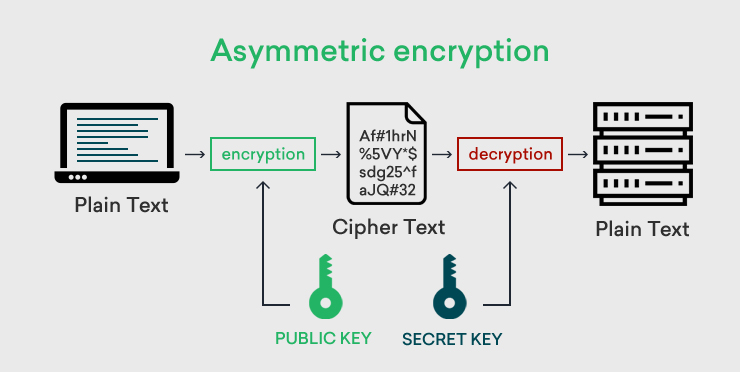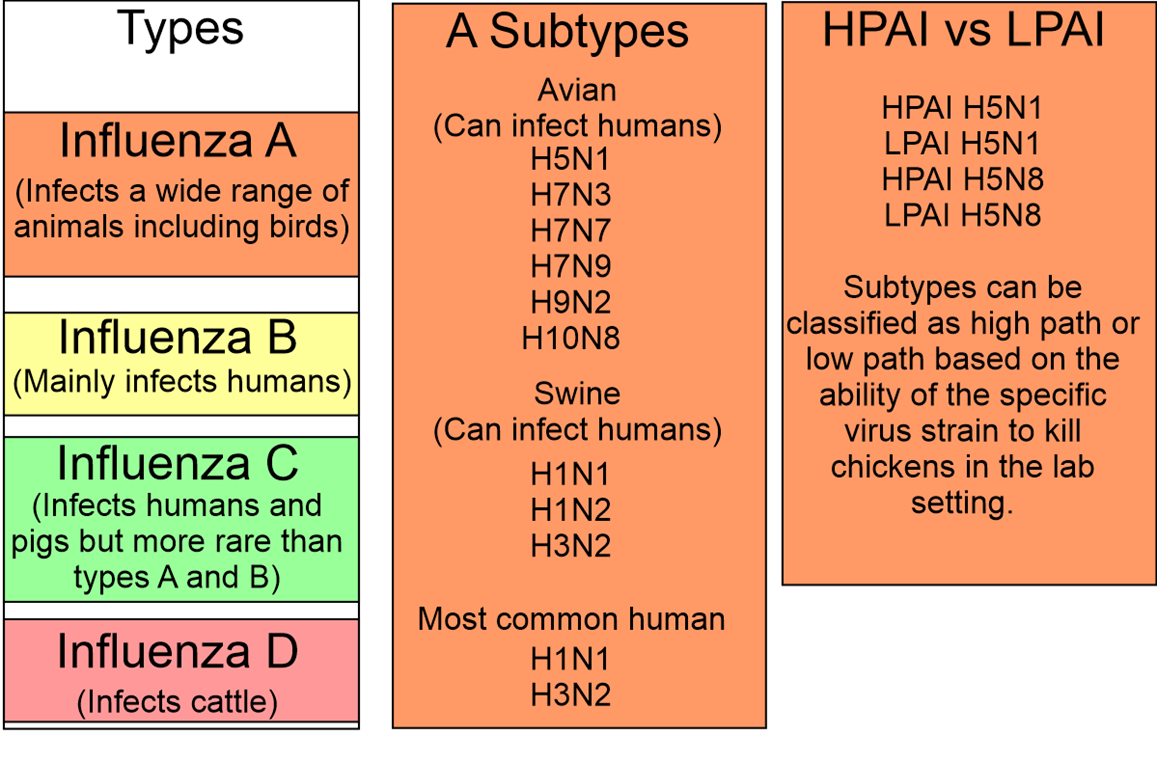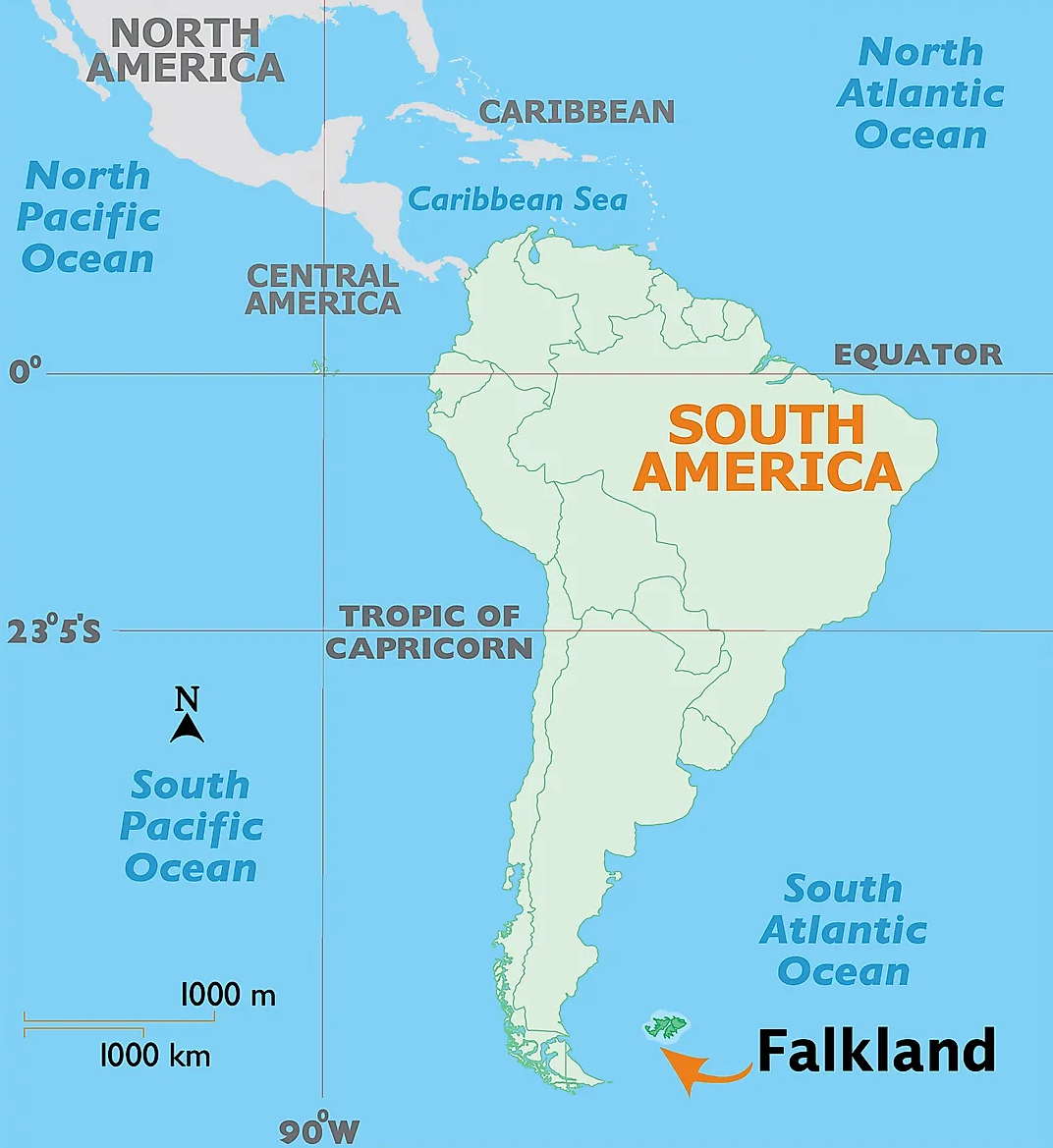Biodiversity & Environment
2500-year-old Solution to Fight Climate Change
For Prelims: 2500-year-old Solution to Fight Climate Change, Isotopes and Radiocarbon, Monsoon Rains.
For Mains: 2500-year-old Solution to Fight Climate Change, Environmental pollution and degradation.
Why in News?
Recently, the Researchers from the Birbal Sahni Institute of Palaeosciences using the 2500-year timeline of human occupation at Vadnagar, showed that India has a 2500-year-old solution to fight Climate Change.
- The study used a comprehensive approach by examining various types of data, including archaeological findings, plant remains, and isotopic data.
- Additionally, they conducted dating analyses using Isotopes and Radiocarbon on grains and charcoal.
What are the Key Highlights of the Report?
- Climate Adaptation Over Millennia:
- In the semi-arid region of Gujarat, the historic site of Vadnagar has unveiled a resilient agricultural economy that thrived over a 2500-year period despite the fluctuation of Monsoon Rains over centuries.
- Vadnagar experienced varying levels of monsoon precipitation during the Historic, Medieval (800 CE-1300 CE), and post-Medieval (Little Ice Age) periods.
- Resilient Crop Economy:
- Despite fluctuations in monsoon rains, the post-Medieval period (1300-1900 CE) saw a resilient crop economy based on small-grained cereals, particularly millets (C4 plants).
- The use of C4 plants reflects the community's adaptive response to a prolonged weakening of the summer monsoon during the Little Ice Age.
- C4 plants are a type of plants that utilize a specific photosynthetic pathway known as the C4 carbon fixation pathway. This pathway is an adaptation to hot and arid environments, as well as conditions where there is a high likelihood of photorespiration.
- Diversification of Food Crops:
- Diversification of food crops and socio-economic practices allowed these ancient societies to navigate the challenges posed by fluctuating precipitation and periods of drought.
What is the Significance of this Study?
- It highlights the importance of understanding historical climate patterns and human responses to them.
- It suggests that past famines and societal collapses were not solely the result of climate deterioration but were also influenced by institutional factors.
- Insights from the study can inform contemporary climate change adaptation strategies, emphasizing the importance of understanding historical climate patterns and human responses.
What are India's Climate Change Mitigation Initiatives?
- National Action Plan on Climate Change (NAPCC):
- Launched in 2008 to address climate change challenges in India.
- Aim to achieve low-carbon and climate-resilient development for India.
- There are 8 national missions forming the core of the NAPCC which represent multi-pronged, long term and integrated strategies for achieving key goals in climate change. These are-
- National Solar Mission
- National Mission for Enhanced Energy Efficiency
- National Mission on Sustainable Habitat
- National Water Mission
- National Mission for Sustaining the Himalayan Ecosystem
- National Mission for A Green India
- National Mission for Sustainable Agriculture
- National Mission on Strategic Knowledge for Climate Change
- Nationally Determined Contributions (NDC):
- India's commitments to reduce greenhouse gas emissions and adapt to climate change.
- Pledged to reduce the emissions intensity of GDP by 45% by 2030 from 2005 levels and generate 50% of electricity from non-fossil fuel sources by 2030.
- Pledged to create additional carbon sink and achieve net zero emissions by 2070.
- National Adaptation Fund on Climate Change (NAFCC):
- Established in 2015 to provide financial assistance to state governments for implementing adaptation projects in various sectors.
- State Action Plan on Climate Change (SAPCC):
- Encourages all states and union territories to prepare their own SAPCCs based on their specific needs and priorities.
- SAPCCs outline strategies and actions for addressing climate change at the sub-national level.
- Aligned with the objectives of the NAPCC and the NDC.
Birbal Sahni Institute of Palaeosciences
- Establishment and Vision: Founded in 1946 by Professor Birbal Sahni, with the vision to establish palaeobotany as a distinct science. The institute aimed to address issues related to the origin and evolution of plant life, geological concerns, and exploration of fossil fuels.
- Focus Areas of Research:
- Biotic evolution through geological time.
- Diversification of Precambrian life.
- Diversity, distribution, origin, and evolution of Gondwana and Cenozoic flora.
- Phylogenetic framework for understanding plant life.
- Intra and inter-basinal correlation during Gondwanan and Cenozoic time-slices.
- Organic petrology to evaluate the quality of Gondwana coals and Cenozoic lignite.
UPSC Civil Services Examination, Previous Year Question:
Prelims
Q.1 In the context of India’s preparation for Climate-Smart Agriculture, consider the following statements: (2021)
- The ‘Climate-Smart Village’ approach in India is a part of a project led by the Climate Change, Agriculture and Food Security (CCAFS), an international research programme.
- The project of CCAFS is carried out under Consultative Group on International Agricultural Research (CGIAR) headquartered in France.
- The International Crops Research Institute for the Semi-Arid Tropics (ICRISAT) in India is one of the CGIAR’s research centres.
Which of the statements given above are correct?
(a) 1 and 2 only
(b) 2 and 3 only
(c) 1 and 3 only
(d) 1, 2 and 3
Ans: (d)
Q.2 Which of the following best describes/describe the aim of ‘Green India Mission’ of the Government of India? (2016)
- Incorporating environmental benefits and costs into the Union and State Budgets thereby implementing the ‘green accounting’.
- Launching the second green revolution to enhance agricultural output so as to ensure food security to one and all in the future.
- Restoring and enhancing forest cover and responding to climate change by a combination of adaptation and mitigation measures.
Select the correct answer using the code given below.
(a) 1 only
(b) 2 and 3 only
(c) 3 only
(d) 1, 2 and 3
Ans: (c)
Q.3 With reference to ‘Global Climate Change Alliance’, which of the following statements is/are correct? (2017)
- It is an initiative of the European Union.
- It provides technical and financial support to targeted developing countries to integrate climate change into their development policies and budgets.
- It is coordinated by World Resources Institute (WRI) and World Business Council for Sustainable Development (WBCSD).
Select the correct answer using the code given below:
(a) 1 and 2 only
(b) 3 only
(c) 2 and 3 only
(d) 1, 2 and 3
Ans: (a)
Mains
Q.1 Describe the major outcomes of the 26th session of the Conference of the Parties (COP) to the United Nations Framework Convention on Climate Change (UNFCCC). What are the commitments made by India in this conference? (2021)
Q.2 ‘Climate Change’ is a global problem. How will India be affected by climate change? How Himalayan and coastal states of India will be affected by climate change? (2017)


Biodiversity & Environment
National Conference on Promotion of Seaweed Cultivation
For Prelims: Seaweed, Medical Food of the 21st Century, Kelp forests, Red algae, Blue algae, Major Seaweed Beds in India, Commercialised Seaweed Products in India.
For Mains: Distribution and Significance of Seaweeds, Seaweed Cultivation in India.
Why in News?
Recently, the National Conference on Promotion of Seaweed Cultivation was held in Koteshwar (Kori Creek), Kutch, Gujarat.
- It aimed at implementing seaweed cultivation on a pan-India basis, emphasizing the promotion of seaweed cultivation to diversify marine production and enhance fish farmer income.
What are Seaweeds?
- About: Seaweeds are macroscopic, multicellular, marine algae. They come in a variety of coluors, including red, green, and brown.
- They are referred to as the 'Medical Food of the 21st Century’.
- Distribution: Seaweeds are found mostly in the intertidal region, in shallow and deep waters of the sea and also in estuaries and backwaters.
- Large seaweeds form dense underwater forests known as kelp forests, which act as underwater nurseries for fish, snails and sea urchins.
- Seaweed Species in India: India boasts approximately 844 reported seaweed species in its seas.
- Some specific species, such as Gelidiella acerosa, Gracilaria spp., Sargassum spp., Turbinaria spp., and Cystoseira trinodis are cultivated for the production of agar, alginates, and liquid seaweed fertilizer.
Note
Agar is obtained from red algae and is used as thickening and gelling agent in jellies, puddings, jams etc, whereas alginate is obtained from brown algae and used as thickener and stabilizer in ice cream, sauces, and dressings.
- Despite having 46 seaweed-based industries in India, particularly 21 for Agar and 25 for Alginate production, their operational efficiency is hindered by the shortage of raw materials.
- Major Seaweed Beds in India: Abundant seaweed resources are found along the Tamil Nadu and Gujarat coasts, as well as around Lakshadweep and the Andaman & Nicobar Islands.
- Notable seaweed beds exist around Mumbai, Ratnagiri, Goa, Karwar, Varkala, Vizhinjam, and Pulicat in Tamil Nadu, Andhra Pradesh, and Chilka in Orissa.
- Significance:
- Bio-indicator: They act as bio-indicator by absorbing excess nutrients and signalling marine chemical damage caused by waste from agriculture, industries, and households, often leading to algal blooming.
- They play a vital role in restoring ecosystem balance.
- Food Source: Seaweed is a nutritional powerhouse, rich in vitamins, minerals, and dietary fibre.
- It Is used in various food products, from sushi and salads to snacks and thickeners.
- Many seaweeds contain anti-inflammatory and anti-microbial agents. Seaweed is the best source of iodine.
- Bioproducts: Seaweed extracts are used in a wide range of products, including cosmetics, pharmaceuticals, and bioplastics. They offer sustainable alternatives to conventional options.
- Carbon Capture: Seaweed absorbs carbon dioxide from the atmosphere as it grows, making it a potential tool in the fight against climate change.
- Studies suggest cultivating and sinking seaweed could effectively store long-term carbon.
- Livelihoods: Seaweed farming provides income and empowers coastal communities, particularly women and small-scale farmers.
- It requires minimal investment and offers relatively quick returns.
- Other Benefits: Seaweeds are utilized for various purposes, including laxatives, pharmaceutical capsules, goiter treatment, cancer therapy, bone replacement, and cardiovascular surgeries.
- Anecdotal evidence also suggests that the ancient Egyptians may have used them as a treatment for breast cancer.
- Bio-indicator: They act as bio-indicator by absorbing excess nutrients and signalling marine chemical damage caused by waste from agriculture, industries, and households, often leading to algal blooming.
- Related Government Initiatives:
- Seaweed Mission: This initiative aims to commercialize seaweed farming and processing for value addition. It also aims to increase cultivation along India's 7,500-kilometer coastline.
- Commercialisation of Seaweed Products: The Indian Council of Agricultural Research(ICAR)- Central Marine Fisheries Research Institute (CMFRI) has successfully commercialized two seaweed-based nutraceutical products, CadalminTM Immunalgin extract (CadalminTM IMe) and CadalminTM Antihypercholesterolemic extract (CadalminTM ACe).
- These products, developed with eco-friendly 'green' technology, aim to boost anti-viral immunity and combat high cholesterol or dyslipidemia (imbalance of cholesterol).
- Multi-Purpose Seaweed Park in Tamil Nadu.


Biodiversity & Environment
Gentoo Penguins
For Prelims: H5N1 Avian Influenza Virus, Falkland Islands, World Health Organisation (WHO).
For Mains: Gentoo Penguin, Environmental pollution and degradation.
Why in News?
Recently, over 200 Gentoo penguins have been found dead in the Falkland Islands, Antarctica due to the spread of the H5N1 Avian Influenza Virus.
- Falkland Islands is an archipelago in the South Atlantic Ocean.
What is Avian Influenza?
- About:
- Avian influenza, often referred to as bird flu, is a highly contagious viral infection that primarily affects birds, particularly wild birds and domestic poultry.
- In 1996, highly pathogenic avian influenza H5N1 virus was first identified in domestic waterfowl in Southern China. The virus is named A/goose/Guangdong/1/1996.
- Transmission to Humans and Related Symptoms:
- Human cases of H5N1 avian influenza occur occasionally, but it is difficult to transmit the infection from person to person. As per World Health Organisation (WHO), when people do become infected, the mortality rate is about 60%.
- It can range from mild flu-like symptoms, including fever, cough, and muscle aches, to severe respiratory issues like pneumonia, difficulty breathing, and even cognitive problems such as altered mental status and seizures.
- Human cases of H5N1 avian influenza occur occasionally, but it is difficult to transmit the infection from person to person. As per World Health Organisation (WHO), when people do become infected, the mortality rate is about 60%.
- Avian Influenza and India:
- Initial Outbreak:
- The initial outbreak of Highly Pathogenic Avian Influenza (HPAI) H5N1 in India occurred in 2006 in Navapur, Nandurbar district, Maharashtra, and was followed by annual outbreaks.
- H5N8 was first observed in India in November 2016, mainly affecting wild birds across five states, with Kerala reporting the most cases.
- The disease has been reported in 24 states and union territories, resulting in the culling of over 9 million birds to control its spread.
- Related Initiative:
- India's approach to controlling Highly Pathogenic Avian Influenza (HPAI) follows a "detect and cull" policy as outlined in the National Action Plan for Prevention, Control, and Containment of Avian Influenza (revised - 2021).
- Initial Outbreak:
- Treatment:
- Antivirals have demonstrated effectiveness in the treatment of avian influenza virus infections in humans, lowering severity and the risk of death.
- HPAI stands for Highly Pathogenic Avian Influenza and LPAI stands for Low Pathogenic Avian Influenza.
What are the Key Facts About Gentoo Penguins?
- Scientific Name: Pygoscelis papua
- About:
- They are characterized by a band of white feathers extending across the top of the head from just above each eye.
- Other distinguishing features include a black throat, a brush tail that is large in comparison with other penguin species, and a bill that is mostly deep orange or red.
- Distribution:
- They are exclusively located in the Southern Hemisphere, primarily found on the Antarctic Peninsula and numerous sub-Antarctic islands, with a notable concentration in the Falkland Islands in the South Atlantic Ocean.
- Habitat:
- These penguins are typically situated along shorelines, allowing for quick access to food sources while staying in proximity to their nests. This strategic positioning facilitates efficient foraging and nesting activities.
- Threats:
- Predators: Vulnerable to predation by South American sea lions, Weddell seals, leopard seals, killer whales, skuas, sheathbills, caracaras, and giant fulmars.
- Human Impact: Historical practices such as egg collection for supplementation, and harvesting of skins and blubber.
- Environmental Changes: Changing environmental conditions and competition with humans for prey, potentially impact population sizes.
- Conservation Status:
- IUCN Red List: Least Concern.
What are the Key Facts About the Falkland Islands?
- Location: The Falkland Islands are a British Overseas Territory located in the South Atlantic Ocean. They are about 500 km east of the coast of Argentina.
- Stanley is the capital and largest city of the Falkland Islands.
- Territorial Status: The Falkland Islands are a British Overseas Territory, but Argentina also claims sovereignty over the islands, leading to a historical conflict between the two countries. E.g. 1982 War between Argentina and British forces over the territory of the Falkland Islands.
- English is the official language.
- Wildlife: The Falkland Islands are home to diverse wildlife, including various species of birds, seals, and penguins. The islands are known for their large colonies of penguins, such as the King Penguin and the Magellanic Penguin.
UPSC Civil Services Examination, Previous Year Question (PYQ)
Q. H1N1 virus is sometimes mentioned in the news with reference to which one of the following diseases? (2015)
(a) AIDS
(b) Bird flu
(c) Dengue
(d) Swine flu
Ans: (d)


Science & Technology
Conserving Northern White Rhino Through Surrogacy
For Prelims: Northern White Rhino, in-vitro fertilization (IVF), Surrogacy, Indian rhinoceros
For Mains: Surrogacy Associated Challenges, Role of Biotechnology in the Conservation of Extinct species
Why in News?
The northern white rhino (NWR) is one of the most endangered animals on the planet, with only two females left alive. In a bid to rescue this species, scientists embarked on an ambitious project named BioRescue in 2015, employing reproductive technologies like in-vitro fertilization (IVF) and stem cell techniques.
- Recently, the international consortium, BioRescue, announced the first-ever rhino pregnancy through a lab-made embryo transferred to a southern white rhino.
- This endeavour represents a beacon of hope for the survival of the northern white rhino.
How are Scientists Creating Test Tube Rhinos?
- In-Vitro Fertilization (IVF) Breakthrough:
- BioRescue, an international consortium of scientists, achieved a historic milestone with the first-ever rhino pregnancy through IVF.
- The process involved transferring a lab-made rhino embryo into a surrogate southern white rhino.
- BioRescue, an international consortium of scientists, achieved a historic milestone with the first-ever rhino pregnancy through IVF.
- Surrogacy:
- The death of the last male northern white rhino in 2018 made surrogacy the only viable option for species regeneration.
- The remaining two females, Najin and Fatu, were found incapable of reproduction for pathological reasons.
- The only hope for the NWR is to use frozen sperm from deceased males and eggs from the females to create embryos in the laboratory, and then implant them into surrogate mothers from the southern white rhino (SWR) subspecies, which is more abundant and genetically similar.
- The death of the last male northern white rhino in 2018 made surrogacy the only viable option for species regeneration.
- Concerns Regarding the Test Tube Rhinos:
- Genetic Viability Concerns:
- Embryos used in the process are derived from eggs of two females and sperm from deceased males, limiting the gene pool for a viable northern white population.
- Preserving Northern White Rhino Traits:
- Crossbreeding with southern white rhinos is not a solution, as it would result in the loss of unique attributes of the northern white, adapted for swampy habitats.
- Genetic diversity remains a concern even with successful IVF and surrogacy attempts.
- Crossbreeding with southern white rhinos is not a solution, as it would result in the loss of unique attributes of the northern white, adapted for swampy habitats.
- Behavioral Challenges in IVF Offspring:
- Babies born through IVF are not genetically hardwired to exhibit typical northern white rhino behaviours.
- Early interaction and learning from northern white adults are crucial for maintaining species-specific traits.
- The urgency lies in the age of the remaining northern white females, Najin (35) and Fatu (24).
- To ensure behavioral and social skills are passed on, the first IVF calves must be born in time to learn from the surviving females.
- Babies born through IVF are not genetically hardwired to exhibit typical northern white rhino behaviours.
- Conservation Beyond Test Tubes:
- Critics argue that the focus should not only be on species regeneration but also on addressing the root causes of extinction, such as habitat threats and poaching.
- Genetic Viability Concerns:
Surrogacy:
- It is an arrangement in which a woman (the surrogate) agrees to carry and give birth to a child on behalf of another person or couple (the intended parent/s).
- A surrogate, sometimes also called a gestational carrier, is a woman who conceives, carries and gives birth to a child for another person or couple (intended parents).
What are the Key Facts Regarding the Northern White Rhino?
- About:
- The NWR is a subspecies of the white rhino (Ceratotherium simum), which is native to central and eastern Africa.
- White rhinos are the second largest land mammal after the elephant. They are known as the square-lipped rhinoceros, white rhinos have a square upper lip with almost no hair.
- The northern and southern white rhino are two genetically distinct subspecies of the white rhino.
- Current Status:
- The IUCN Red List Status of White Rhino is Near Threatened. The IUCN status of its subspecies is as follows:
- Northern White Rhino: Critically Endangered.
- Southern White Rhino: Near Threatened.
- The NWR population has declined dramatically due to poaching, habitat loss, civil war, and disease.
- In the 1960s, there were about 2,000 NWRs in the wild. By 2008, only four remained.
- The last male NWR, named Sudan, died in 2018, leaving only two females, Najin and Fatu, who live in a conservancy in Kenya.
- In the 1960s, there were about 2,000 NWRs in the wild. By 2008, only four remained.
- The majority (98.8%) of the southern white rhinos occur in just four countries: South Africa, Namibia, Zimbabwe, and Kenya.
- Southern white rhinos are around 18,000 animals that exist in protected areas and private game reserves.
- The IUCN Red List Status of White Rhino is Near Threatened. The IUCN status of its subspecies is as follows:
Note
- The Indian rhinoceros (also known as the greater one-horned rhinoceros) is different from the African rhinos and it is listed as vulnerable on the IUCN Red List.
UPSC Civil Services Examination, Previous Year Question
Prelims
Q. In the context of recent advances in human reproductive technology, “Pronuclear Transfer” is used for (2020)
(a) fertilization of egg in vitro by the donor sperm
(b) genetic modification of sperm producing cells
(c) development of stem cells into functional embryos
(d) prevention of mitochondrial diseases in offspring
Ans: (d)


Science & Technology
Brainoware
For Prelims: Brainoware, Neuromorphic computing, Tissue engineering, Organoid Neural Network, Artificial Neural Network
For Mains: Concept of organoid neural networks (ONNs), Organoids and their ethical utilization, IT & Computers
Why in News?
Recently, scientists have seamlessly integrated brain-like tissue with electronics to create Brainoware, an 'organoid neural network (ONN)' capable of recognising voices and solving complex mathematical problems.
- This innovative system extends neuromorphic computing, to a new level by directly integrating brain tissue into a computer.
What is Brainoware?
- About:
- Brainoware is an innovative computing system that melds brain-like tissue with electronics.
- Brainoware integrates brain organoids with microelectrodes, forming an 'organoid neural network (ONN)' that directly incorporates living brain tissue into the computing process.
- Brain organoids are 3D tissues that simulate the structure and function of the human brain. They are derived from human embryonic stem cells, and are able to self-organize.
- Brain organoids are similar to the brain's cell composition and structure, and can reflect the brain's developmental process. They are used as models to study human brain development and brain-related diseases.
- ONNs are different from artificial neural networks, which are made of silicon chips because they use biological neurons that can adapt and learn from their environment.

- Operational Mechanism:
- Three-Layered Architecture: Input, Reservoir, and Output
- Input Signals Processing:
- Input signals, in the form of electrical stimulation, are processed through the ONNs.
- Reservoir:
- The reservoir, acting as a black-box, converts signals into mathematical entities that the computer can efficiently process, eliminating the need for constant back-and-forth data transfer.
- Output Readout:
- The output layer, modified conventional computer hardware, interprets Brainoware's neural activity, providing a tangible result.
- Input Signals Processing:
- Three-Layered Architecture: Input, Reservoir, and Output
- Advantages over Traditional Neuromorphic Computing:
- Memory and Processing Separation:
- Traditional neural networks face a challenge where memory units and data processing units are separate, leading to increased time and energy demands for complex problem-solving.
- Previous attempts to improve efficiency involved neuromorphic chips with short-term memory. However, these chips could only partially mimic brain functions and required further enhancements in processing capability and energy efficiency.
- Biological Neural Network Integration:
- Brainoware utilizes a biological neural network, comprising live brain cells, to address the inefficiencies in traditional neuromorphic computing.
- Unlike AI hardware, brain cells store memory and process data without physically separating the two, resulting in significantly lower energy consumption.
- Brainoware utilizes a biological neural network, comprising live brain cells, to address the inefficiencies in traditional neuromorphic computing.
- Memory and Processing Separation:
- Challenges and Considerations:
- The system does face challenges, including the technical expertise and infrastructure required to maintain a biological neural network.
- Ethical concerns also arise, questioning the consciousness of organoids and their use in a mechanistic way.
- The system does face challenges, including the technical expertise and infrastructure required to maintain a biological neural network.
- Future Prospects:
- While Brainoware is in its early stages, continued study of the 'organoid neural network' could provide foundational insights into learning mechanisms, neural development, and the cognitive implications of neurodegenerative diseases.
- This could potentially contribute to advancements in neuroscience and medical research.
- It opens possibilities at the intersection of tissue engineering, electrophysiology, and neural computation.
- While Brainoware is in its early stages, continued study of the 'organoid neural network' could provide foundational insights into learning mechanisms, neural development, and the cognitive implications of neurodegenerative diseases.
Key Terms
- Neuromorphic Computing:
- It is a type of artificial intelligence (AI). It uses specialized hardware and software algorithms to simulate neurons and synapses to process data more efficiently than traditional computers.
- Neuromorphic computing uses artificial neurons and synapses to process data in a similar way the human brain does.
- It relies on parallel processing, allowing multiple tasks to be handled simultaneously. Its adaptable nature enables real-time learning and decision-making.
- The current neuromorphic computing market is majorly driven by increasing demand for AI and brain chips to be used in cognitive and brain robots.
- It is a type of artificial intelligence (AI). It uses specialized hardware and software algorithms to simulate neurons and synapses to process data more efficiently than traditional computers.
- Tissue Engineering:
- It is a biomedical engineering field that uses engineering and life sciences to create biological substitutes that can restore, maintain, or improve tissue function.
- The goal of tissue engineering is to assemble functional constructs that restore, maintain, or improve damaged tissues or whole organs.
- It is a biomedical engineering field that uses engineering and life sciences to create biological substitutes that can restore, maintain, or improve tissue function.
- Neural Computation:
- It is the processing of information by networks of neurons. It is a type of brain activity that aims to understand how neurons work together to process information.
- Electrophysiology:
- It is a branch of physiology that studies the electrical properties of biological cells and tissues. It also explores the electrical activity of living neurons and the molecular and cellular processes that govern their signaling.
Important Facts For Prelims
End-to-end Encryption
Why in News?
End-to-end encryption is crucial for cybersecurity, ensuring secure transmission of sensitive data by encoding it exclusively for the sender and recipient.
- It protects against unauthorized access, theft, surveillance, and tampering, especially in the face of rising cyber threats.
What is Encryption?
- About: Encryption involves transforming consumable information into an unconsumable form according to various rules, fundamentally encompassing different rule sets.
- In this context, the key is a set of data that enables a computer to decrypt encrypted text by understanding the specific rules used to encrypt it.
- E2E Encryption: E2E encryption involves securing specific points through which data is transmitted.
- When communicating with a friend on a messaging app, messages are encrypted during transit to prevent unauthorized access, employing both encryption-in-transit, which secures messages during relay between the server and the user, and end-to-end encryption (E2E), which ensures encryption both during transit and while stored on the server until the recipient decrypts it.
Think of it like this:
1. Regular message: Sending a postcard - anyone can read it.
2. End-to-end encryption: Sending a sealed, coded letter - only the recipient with the right code can read it.
- Process of Encryption: Various encryption methods can be employed based on the desired level of secrecy and protection for information.
- Symmetric encryption involves using the same key for both encrypting and decrypting information, with Data Encryption Standard (DES) serving as a well-known example of a symmetric encryption protocol.
- Symmetric encryption, exemplified by the Advanced Encryption Standard (AES) used in scenarios like encrypting a computer's hard drive or setting a WiFi password, proves beneficial when the sender and recipient are identical entities.

- Symmetric encryption, exemplified by the Advanced Encryption Standard (AES) used in scenarios like encrypting a computer's hard drive or setting a WiFi password, proves beneficial when the sender and recipient are identical entities.
- Asymmetric encryption, also known as public-key cryptography, operates on the principle of using a pair of keys: a public key and a private key.
- The public key is openly shared and can be used by anyone to encrypt messages, but only the possessor of the corresponding private/secret key can decrypt those messages.
- This asymmetric encryption approach ensures secure communication without the need for both parties to share the same key. This way, the encryption process can be public, but decryption remains private, providing a secure means of communication.

- Symmetric encryption involves using the same key for both encrypting and decrypting information, with Data Encryption Standard (DES) serving as a well-known example of a symmetric encryption protocol.
- Vulnerabilities of E2E Encryption: While E2E encryption is a robust security measure, various factors, including potential vulnerabilities like Man In the Middle (MITM) attacks, user complacency, malware threats, company backdoors, and legal requirements, can impact the overall security of encrypted messages.
What is the Role of Hash Function?
- There are different symmetric and asymmetric schemes that encrypt messages in different ways, i.e. using different hash functions.
- The role of a hash function is to encrypt a message while ensuring certain properties:
- Message Concealment: The hash function should take an input message and generate an encrypted version known as the digest. Importantly, given the digest, it should not reveal information about the original message.
- Fixed-Length Output: The function should accept messages of variable lengths and produce a digest with a fixed length. This prevents deducing the original message length from the digest length.
- Unique Digests: The hash function must produce unique digests for unique messages, ensuring that different messages do not result in the same hash.
- The role of a hash function is to encrypt a message while ensuring certain properties:
UPSC Civil Services Examination, Previous Year Question (PYQ)
Prelims:
Q.The terms ‘WannaCry, Petya and EternalBlue’ sometimes mentioned in the news recently are related to (2018)
(a) Exoplanets
(b) Cryptocurrency
(c) Cyber attacks
(d) Mini satellites
Ans: C
Mains:
Q. Keeping in view of India’s internal security, analyse the impact of cross-border cyber-attacks. Also, discuss defensive measures against these sophisticated attacks. (2021)
Rapid Fire
C-CARES Web Portal
Recently, the Ministry of Coal (MoC) launched the C-CARES web portal of the Coal Mines Provident Fund Organization (CMPFO).
- The C-CARES web portal is developed by the Centre for Development of Advanced Computing (C-DAC), a Research and development organization under MeitY, the portal promises to revolutionize record-keeping and streamline processes for CMPFO subscribers and pensioners.
- CMPFO is an autonomous organization under the MoC for administering Provident Fund and Pension schemes for social security in the coal sector.
- The Organization is presently rendering services to about 3.3 lakh Provident Fund subscribers and 6.1 lakh pensioners of the coal sector.
- C-CARES will enable CMPF subscribers and coal companies to perform various functions tailored to their needs, including online settlement of claims, paperless working, timely and accurate settlement of claims, reduction in processing time, and grievance redressal.
- This digital transformation aligns with the vision of Digital India.
Read more: Digital India
Rapid Fire
Digital Detox Initiative for Responsible Tech Use
The Government of Karnataka, in collaboration with the All India Game Developers Forum (AIGDF), is set to launch a Digital Detox initiative, concentrating on gaming and social media.
- Digital Detox Centers will be established across Karnataka, offering personalized guidance, counselling, and practical tools to manage screen time effectively.
- AIGDF is a not-for-profit collective under the aegis of the All India Gaming Federation (AIGF).
- The Indian gaming market is expected to grow from USD 2.8 billion in 2022 to USD 5 billion in 2025,
Read more: Decoding Online Gaming Ethics
Rapid Fire
The Marvel of E Ink Displays
E Ink displays are transforming visual technology through their minimal power usage, eye-friendly features, and diverse applications.
- E Ink displays are a type of electronic paper display technology that mimics the appearance of traditional ink on paper.
- It uses millions of tiny microcapsules filled with positively charged white particles and negatively charged black particles suspended in a clear fluid.
- Often confused with E Paper, E Ink is a specific technology within the E Paper category.
- In contrast to LCD and LED displays that use backlight, E Ink reflects light like paper, reducing eye strain and requiring minimal power, as it only consumes energy during image changes.
- Its applications range from e-readers like Kindle to innovative uses in smartphones, bus stop displays, walking direction signs, and restaurant menu boards.
Read more: Light Emitting Diodes (LED)


Rapid Fire
Sandhayak
The Indian Navy is all set to commission its latest Survey Vessel Sandhayak (Y-3025), at Naval Dockyard, Visakhapatnam, Andhra Pradesh.
- The primary role of the ship is to carry out full-scale hydrographic surveys of ports, harbours, navigational channels/routes, coastal areas and deep seas, towards enabling safe marine navigation.
- In its secondary role, the ship will be capable of undertaking a range of naval operations.
- Sandhayak is equipped with hydrographic equipment including Deep & Shallow Water Multibeam Remotely Operated Vehicle, Side Scan Sonars, Data Acquisition and Processing System, satellite-based positioning systems and terrestrial survey equipment.
- Sandhayak, a testament to India's shipbuilding prowess, with 80% indigenous content, aligns with the nation's drive towards Aatma Nirbhar Bharat.






.png)






